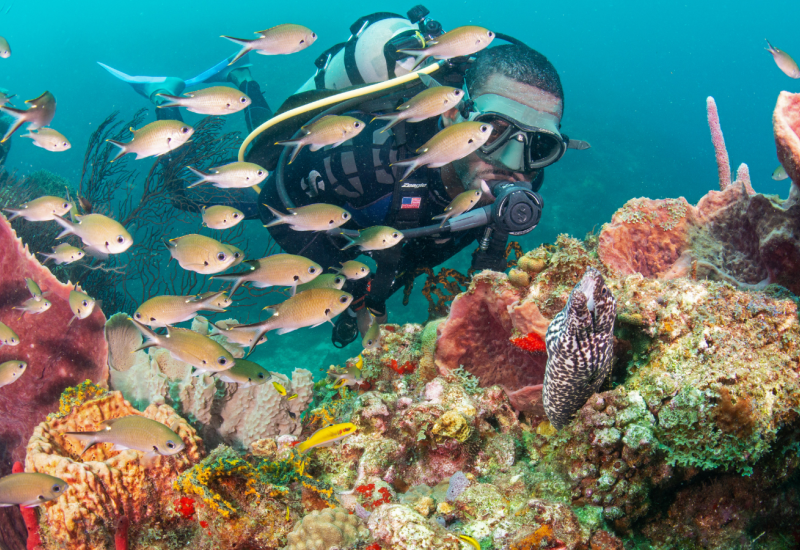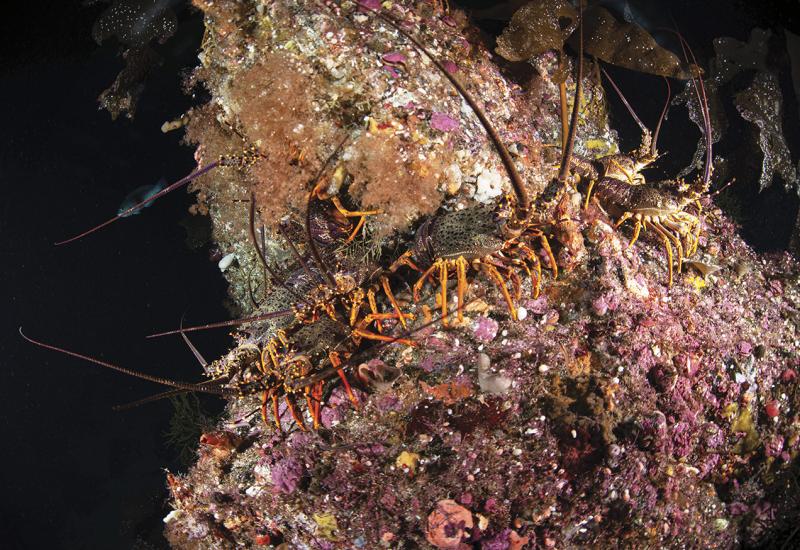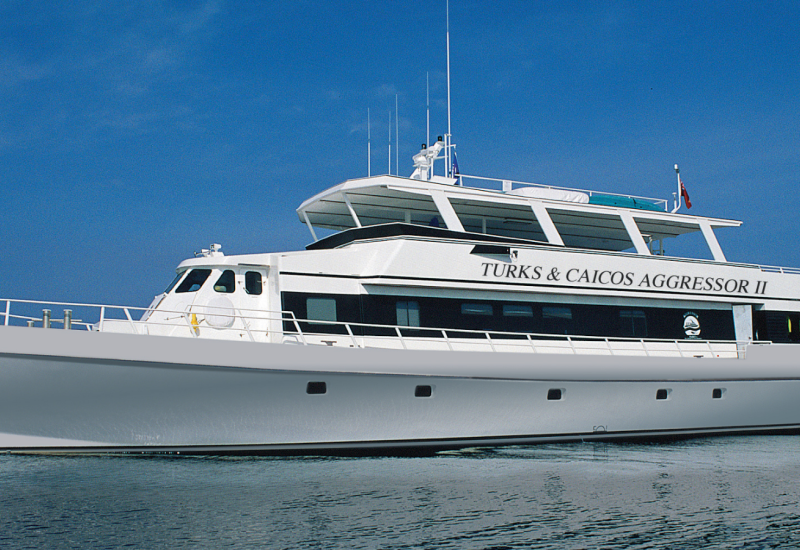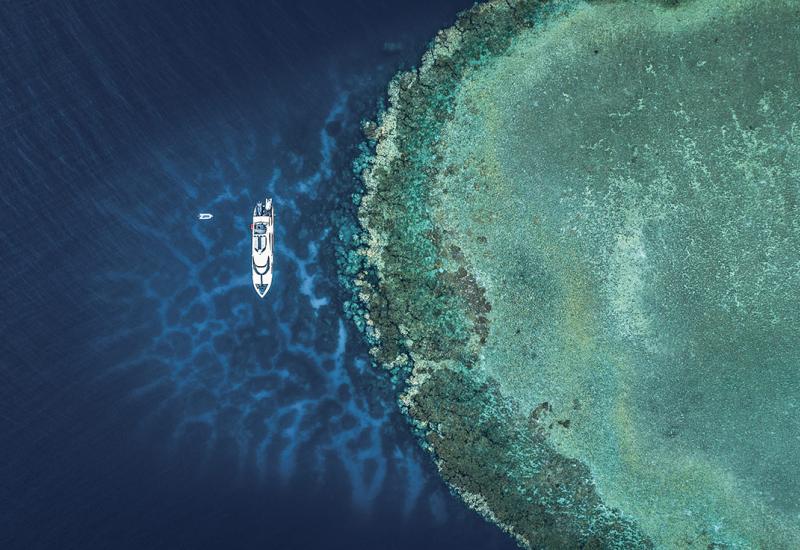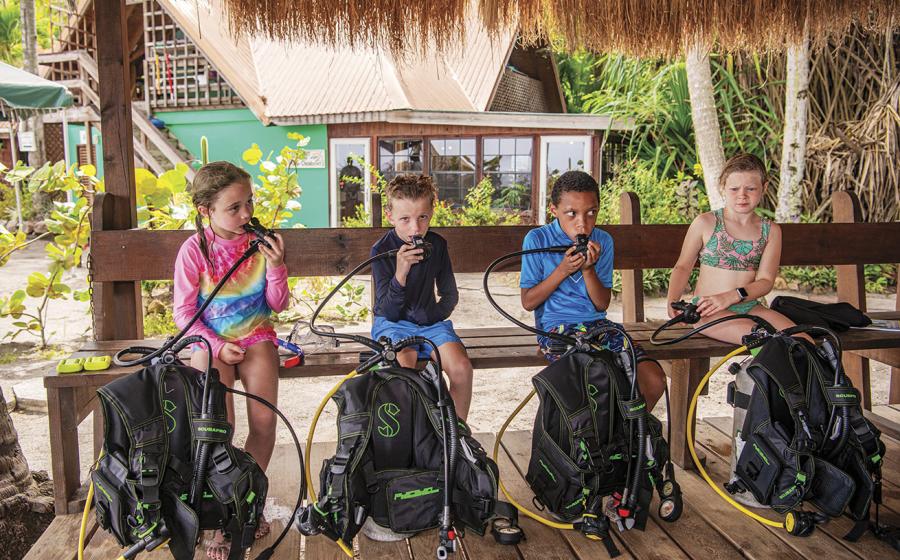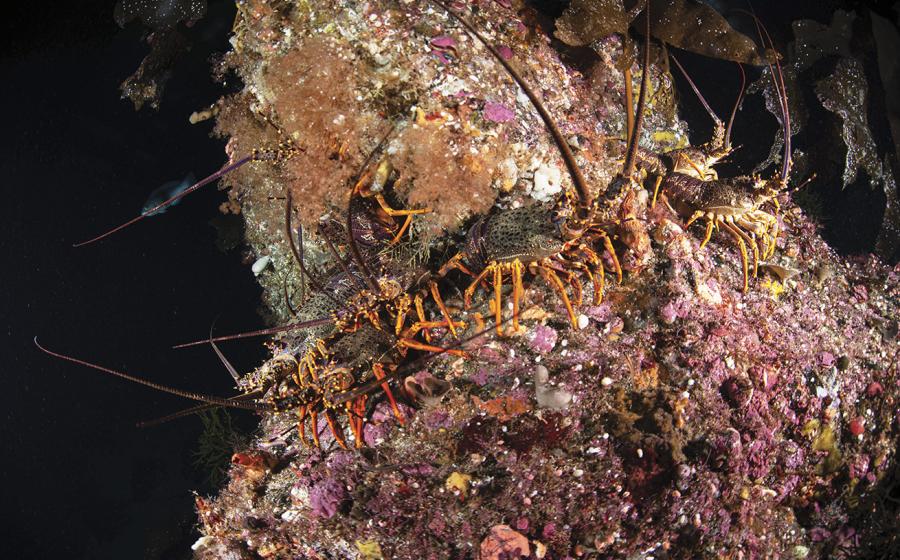Best Destinations to Dive With Big Animals
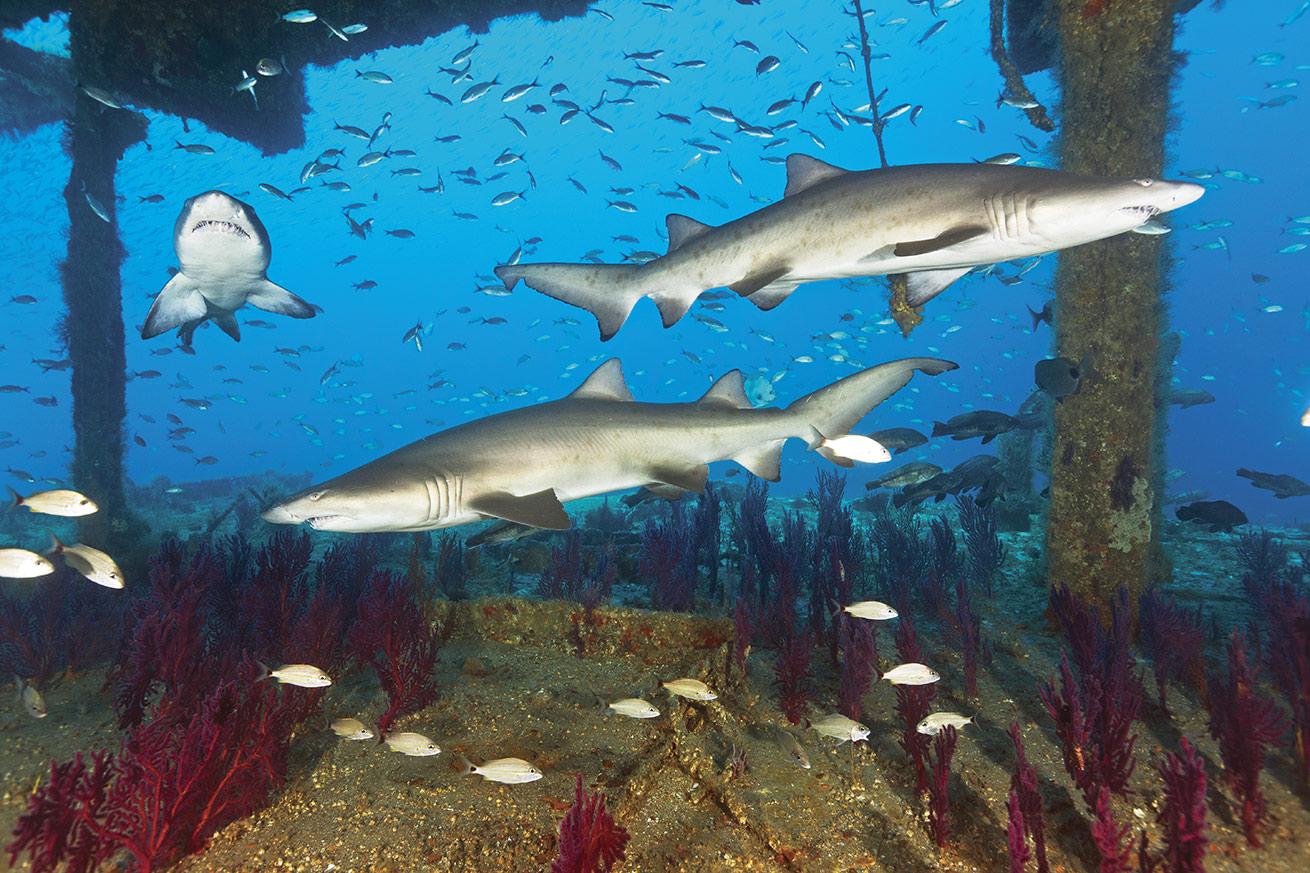
BRANDON COLEDespite the menacing grimace they sport, sand tiger sharks in North Carolina mingle with divers without a trace of aggression.
North Carolina
North Carolina’s Atlantic sand tigers buck every shark stereotype: They move slowly, demonstrate zero aggressive behavior and swim within inches of divers, even though local operators haven’t and don’t offer shark-feeding dives.
This is completely natural behavior, witnessed every summer. It’s believed that this species congregates off the coast of Beaufort and Morehead City to breed.
“The females just hang out and get huge,” says Debby Boyce, owner of Discovery Diving, a PADI Five Star IDC in Beaufort.
Divers primarily encounter female sand tigers, sometimes upward of 50 at a site. These sharks school, moving collectively between a handful of wrecks, most often the Caribsea, a 251-foot freighter 90 feet deep; the Aeolus, a 409-foot cable-laying ship sunk to 110 feet; and the 180-foot Spar, a cutter also purposely sunk to 110 feet.
On many shark feeds, divers kneel in the sand and watch as sharks pass by, typically from the same direction, again and again. The North Carolina sand tiger experience, which is not a shark-feeding dive, is unique for North American divers in that it’s the chance to swim in the water column amid dozens of sharks. The trick to the experience is to continue to look to each side as well as up.
“These sharks will swim right over the top of you,” Boyce says.
During a recent dive, a sand tiger cruised right above one of the divemasters, with the pair swimming in sync for a few beats.
“She had no idea until she lifted her head, bumping the shark and causing it to flick its tail to dart away,” Boyce says.
The sudden movement of the shark’s tail knocked off the divemaster’s mask, giving her a quick startle—but it’s precisely this kind of super close encounter that makes North Carolina a favorite among shark divers.
“We get people coming from all over the world—it’s just that good,” says Boyce.
Need To Know
When To Go May to October
Visibility 30–100 feet
Water Temps 76 degrees in season
What To Bring A camera so you can contribute shark images to Spot a Shark USA, a database to help researchers learn more about the behavior of sand tigers.
Contact Discovery Diving (discoverydiving.com)
Related Reading: 8 Best Places for Shark Encounters
Bahamas
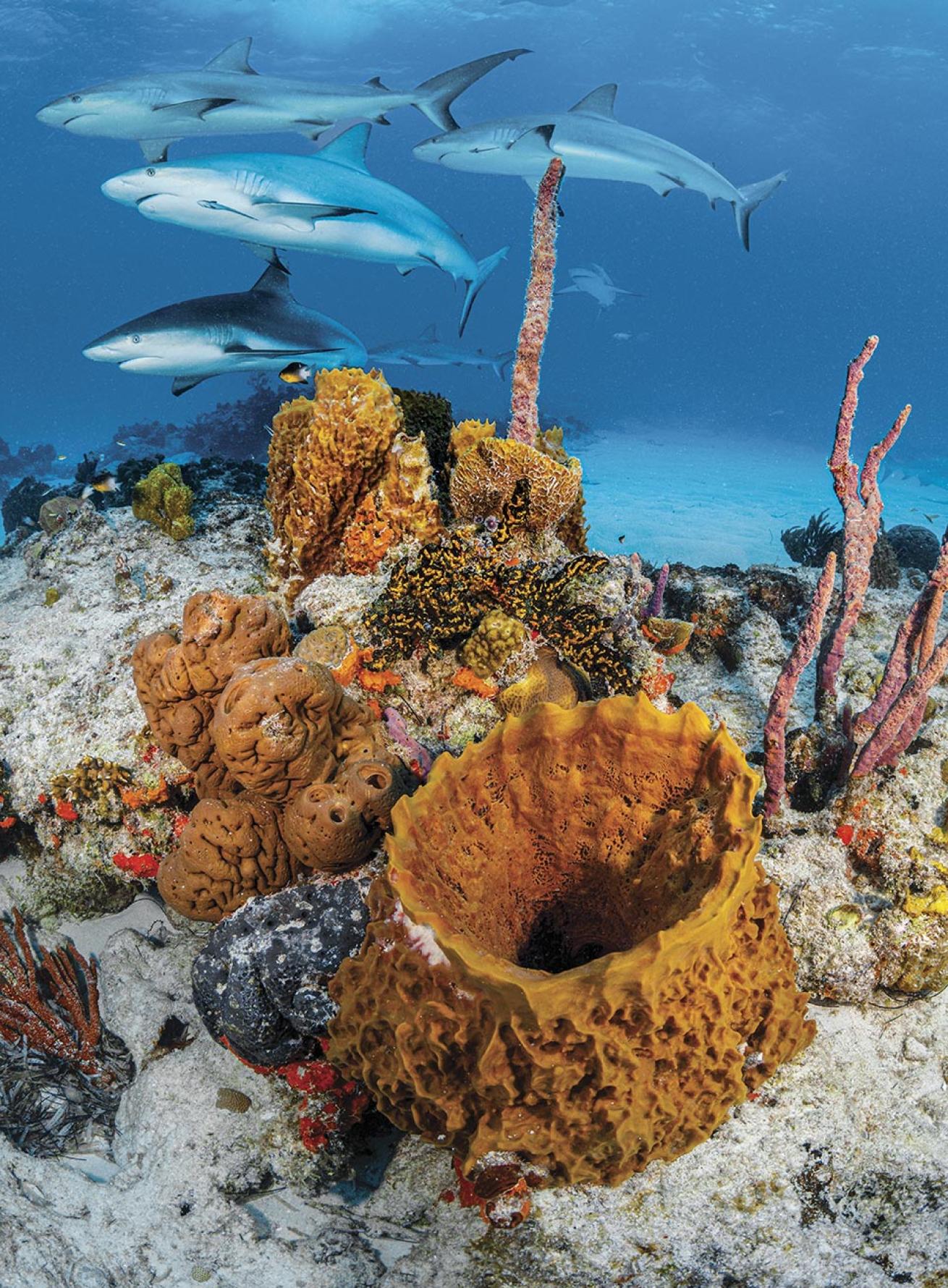
Brandon ColeCaribbean reef sharks cruise above a patch of sponges on a Bahamas reef.
It’s only after they exit the water that divers confide in Michael Clarke, corporate director of watersports for Sandals Resorts, that they’d expected to hear the Jaws theme music when dropping in on the wreck of the Bahama Mama, one of the best sites in the islands for mixing with Caribbean reef sharks.
Sandals Royal Bahamian, on the island of Nassau, is an adults-only, all-inclusive resort that comes with a two-tank trip each day for PADI-certified guests. The watersports team visits the site three times a week, every Monday, Wednesday and Friday, to let guests swim up close with the reef sharks. On any given day, groups encounter at least four or five.
“You think it’s going to be this intimidating shark experience,” he says. “But you get down there, and they’re just cruising. You realize how majestic they are and how small you are in the world.”
The site is a favorite among guests for its sure-thing shark encounters set against a backdrop of a 95-foot wreck that sunk in 1995 and is now covered in coral. With clear visibility, warm water and calm conditions, it’s an idyllic setting for diving with sharks for the first time. Because it’s such a relaxing dive, it shifts divers’ mindsets quickly.
“People can often start nervous, but afterward, they can’t stop raving about the sharks,” he says.
Need To Know
When To Go Year-round
Visibility 80–120 feet
Water Temps 88 degrees in summer; 78 degrees in winter
What To Bring Gear rental is included, but bring a mask if you own one as this is the piece of gear that’s anything but one-size fits-all.
Contact Sandals (sandals.com)
Related Reading: Fighting to Save the Caribbean's Coral Reefs
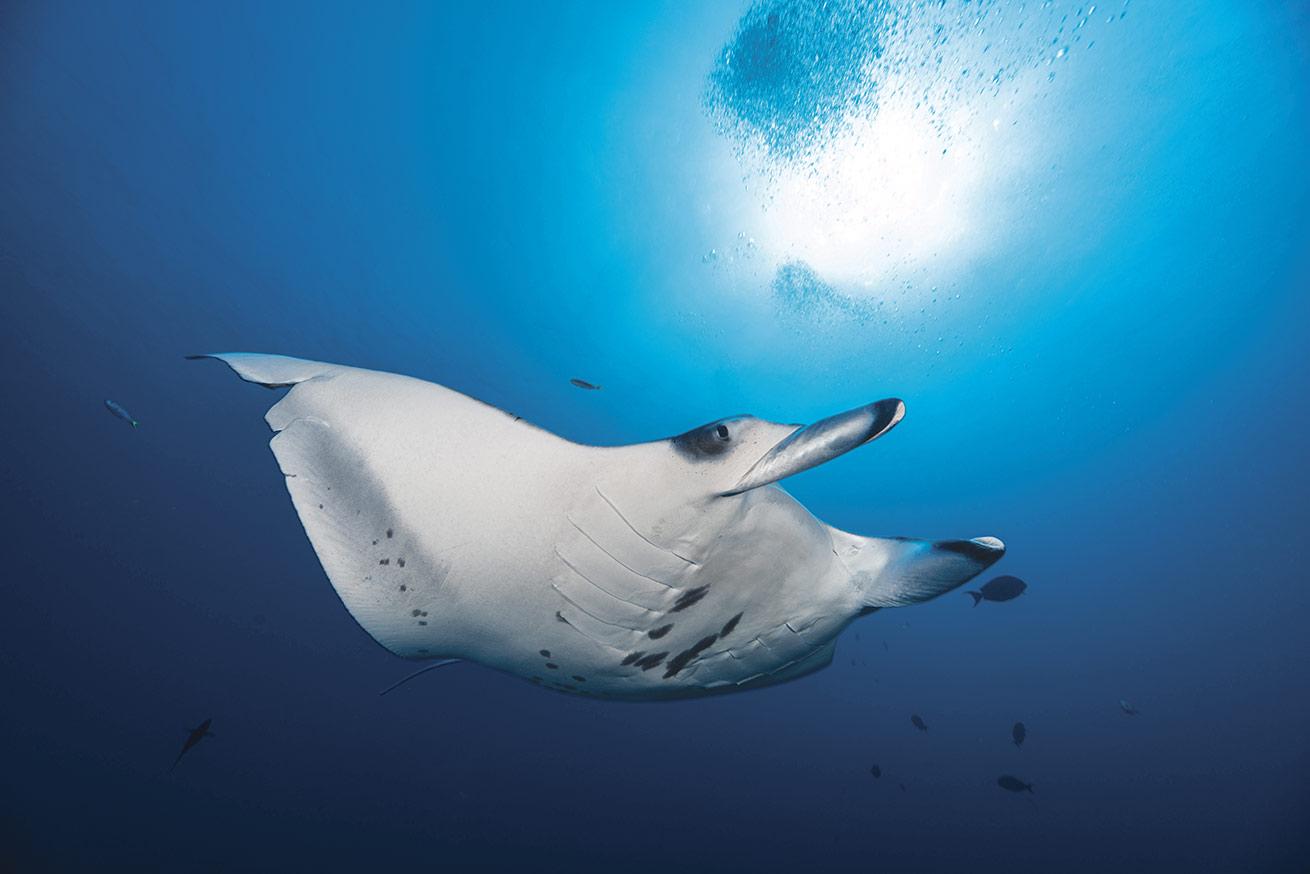
Gerald NowakA manta ray elegantly glides through the water overhead.
Palau
The 500-plus islands that make up the nation of Palau lie at the edge of the Philippine Sea where it meets the deeper Pacific. Here, sites like Peleliu Channel see an influx of big species.
Local operators, including Aggressor Adventures and its Palau Aggressor II and Rock Islands Aggressor liveaboards, dive the site as a drift, where sightings can include anything from crocodilefish to gray reef sharks, the most common shark species in this destination.
As rich as Peleliu is in marine life, it’s second to the site Blue Corner for shark diving.
“It’s the most memorable site for our Palau divers,” says Wayne Brown, president of Aggressor. “This site is the most famous because it always has sharks.”
Dives at Blue Corner are timed with the tide changes, when the largest number of gray reef sharks ride the flow to hunt. In the mix, too, are jacks, snapper and chevron barracuda. Because it’s the ocean and just about anything can happen, it’s also possible to see sailfish, marlin, great hammerheads and, of course, mantas.
Palau is known for mantas, especially in the area known as German Channel, a passageway made in 1911 when the reef was bombed to accommodate the passage of ships back when the island chain was a German colony.
“In all that sand, there are a ton of cleaning stations, easily six to eight,” says Brown.
He recalls a dive where the group sat and watched three mantas swoop overhead.
“It never ended,” he says. “We finally ran out of air.”
German Channel is also where an unexpected moment became one of Brown’s favorite memories of Palau. The group had just finished a dive and was gathered on the back deck when a guide told them to grab a fresh tank and jump in. There, beneath the boat, were 20 or so small blacktip reef sharks, circling in a tight funnel.
“I’d never seen that before—anywhere,” Brown says.
Need To Know
When To Go Year-round
Visibility 75–150 feet, depending on tides and plankton levels (although high plankton levels also tend to mean high numbers of mantas)
Water Temps 81–86 degrees
What To Bring Make sure your BC has a D-ring or two to secure your reef hook for hands-free diving. Extra hooks or clips to secure SMBs and other accessories are also a good idea.
Contact Aggressor Adventures (aggressor.com)
Related Reading: Palau's Enduring Dive Appeal
Readers Choice Awards 2024
This year we surveyed 13,322 readers on their favorite destinations, resorts, operators and liveaboards, awarding their top picks across a variety of categories. Our Readers Choice travel feature highlights the first-place destinations in each global region and offers a taste of what makes each a reader favorite.
➜ See all Readers Choice awardwinning resorts, operators and liveaboards at scubadiving.com/readerschoice.

